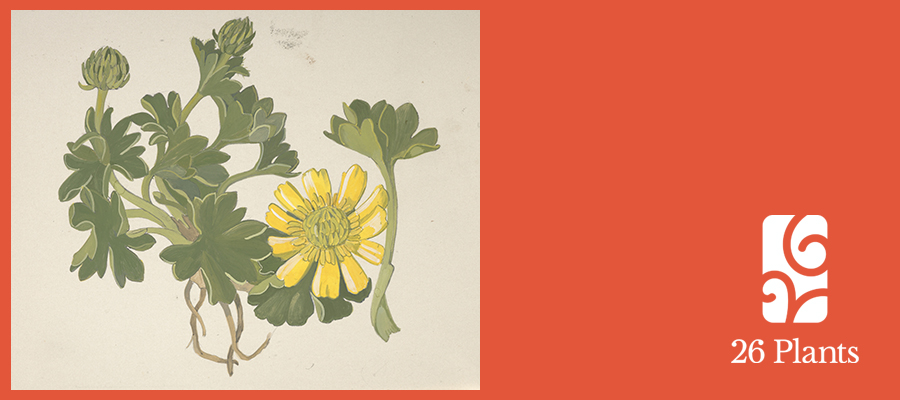Graham’s Buttercup
Ranunculus grahamii
Leah Royden, New Zealand

The Abominable Buttercup
A tall tale, yours.
Set in high places,
air cold enough to freeze blood,
towering peak meets piercing dawn.
A story told in blurry images
and dry, bespectacled factsheets.
You are glabrous, and glaucous, they say
(whatever that means)
with silken-haired pedicels and blunt-toothed lobes.
A shy creature, I think.
A curiosity.
Numinous yellow eyes
glinting over snow and scree,
hidden from heavy boots
and hungry beasts.
I imagine you
a botanist’s boast over an earthy pint.
An enigmatic hermit
watching the snowfall recede
year by year.
Turning your face away,
melting into memory.
A bedtime story.
A tall tale.
I find myself dreaming of snow. Freezer-burnt fever dreams of endless white.
When I wake, I check the snow report.
Less falls as the years pass. Skifields close. Unseasonal sun melts snowpacks into slush, ominous torrents wash away what’s left.
Graham’s Buttercup grows only within the permanent snow line on Aoraki/ Mount Cook, and days are fast coming that ridicule the word “permanent”.
Beyond this, there’s very little known about Graham’s Buttercup. If I’m telling a story, I find myself thinking, it’s a book with everything ripped out but the title page.
More than once, I get halfway through an email asking for a new assignment. Something with half-decent photos, at least. Grainy and blurred, some of the images call to mind long-debunked shots of the Abominable Snowman. Even the better ones look like they were taken with a phone camera. While moving. Accidentally.
As time goes on, I find myself becoming strangely paranoid, wondering if I have chanced upon a conspiracy of sorts. Does Graham’s Buttercup actually exist? Even the name strikes me as suspicious. You’d expect a proper scientist’s surname for a rare plant, grand and dripping with legacy. Not something you’d hear shouted across a pub.
“Graham!”
“Mate!”
“Haven’t seen ya in ages!”
“Yeah mate.”
“Been busy ‘ave ya?”
I pore over bone-dry scientific factsheets, going slowly word-for-word as memories of school biology class bubble up unpleasantly. Sepals, stamens and stigma I remember. If Graham’s Buttercup does exist, it does so with the means to reproduce. Other words (the majority of the other words, if I’m honest) are a mystery. “Glabrous”, Google informs me, means “hairless”, while “glaucose” describes “a plant covered with a greyish, bluish, or whitish waxy coating that is easily rubbed off” (how delightfully specific). I learn that parts of Graham’s Buttercup are fleshy, others thick and hardy, and the leaves have “teeth” … a description of a secretive, mountain-dwelling beast, almost.
From there, words begin to flow in a way that snowflakes soon won’t.
The day will come when the last Graham’s Buttercup will die, high up where the clouds catch on the summit, and nobody will know. Perhaps, over generations, snow will become a memory, a myth, a vanishing dream. Maybe that’s merciful – you can’t grieve what you don’t remember losing.
It’s getting late.
Before I sleep, I check the snow report.
Image by Nancy Williams, provided by Forest and Bird. © Te Papa. CC BY-NC-ND 4.0.
